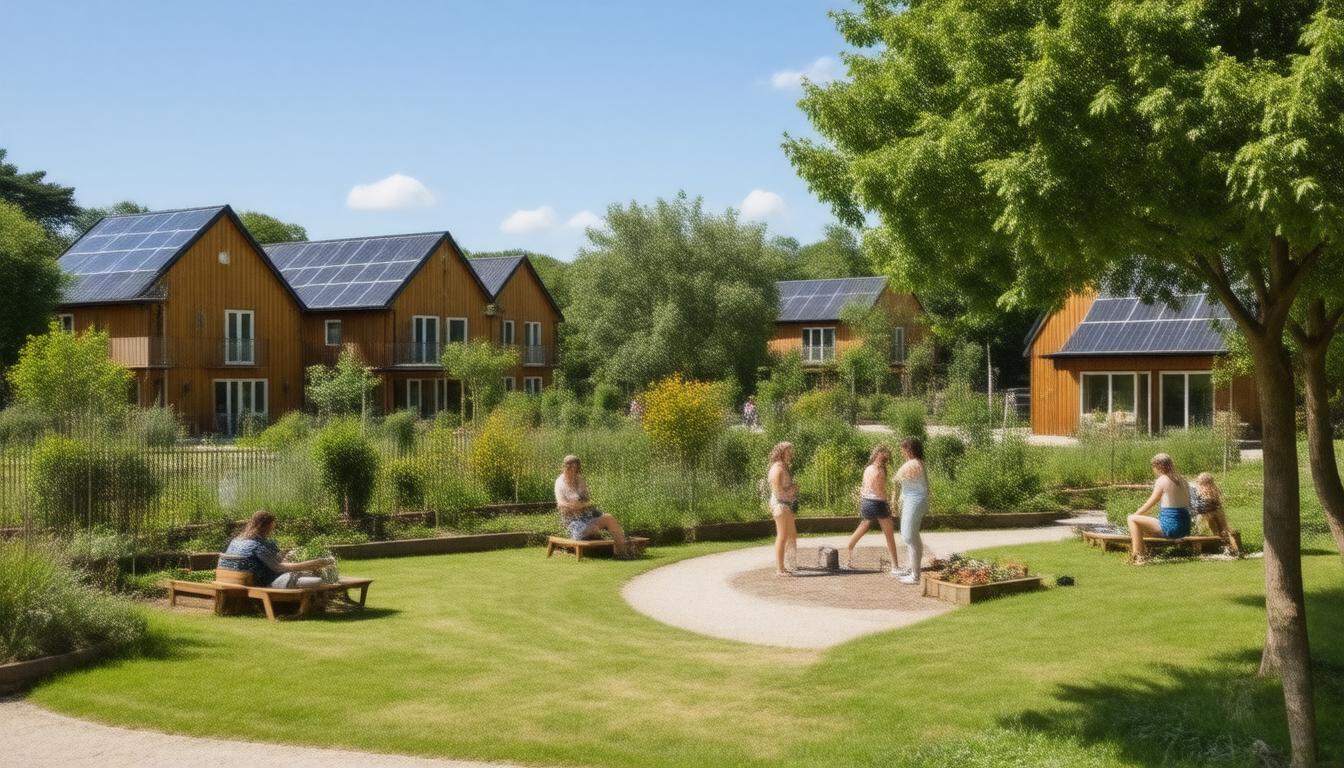Community housing, often perceived as a progressive solution to modern housing challenges, embodies the concept of living in a shared environment that promotes both individual and collective well-being. This model not only addresses the urgent need for affordable housing but also enhances ecological sustainability and social cohesion. By offering an alternative to traditional housing approaches, community housing presents numerous benefits that resonate with the principles of sustainable living. This article delves into the multifaceted advantages of community housing, examining its environmental, social, and economic impacts, while also addressing potential challenges that stakeholders must consider for its successful implementation.
Key Takeaways
- Community housing promotes environmentally sustainable living through shared resources and reduced energy consumption.
- Socially, community housing fosters stronger relationships and support networks among residents.
- Economically, community housing can lower living costs through shared services and facilities.
- Despite its benefits, community housing faces challenges such as governance, funding, and ensuring inclusivity.
- The future of community living hinges on addressing these challenges while maximising the advantages of collaboration and sustainability.
Introduction to Community Housing
Community housing refers to housing projects that are managed and provided by local communities, often aimed at improving living standards and fostering social inclusion for various demographic groups. This type of housing is distinguished from traditional market-based housing as it typically focuses on affordability, sustainability, and community participation (Australian Government, 2020). Community housing plays a crucial role in addressing housing shortages, particularly for lower-income families and individuals, through collaborative models that involve both local residents and governmental organizations (O’Sullivan & Yates, 2019). Such initiatives not only provide essential shelter but also create a sense of belonging and empowerment within communities, fostering a supportive environment for ongoing social development (Baker, 2021). Moreover, community housing is increasingly viewed as a viable solution to urban challenges such as homelessness and housing unaffordability, contributing significantly to the overall wellbeing and resilience of communities (Johnson, 2022). By promoting affordable options and encouraging greater community engagement, community housing stands as a vital component in the broader framework of contemporary housing policy.
The Environmental Benefits of Community Living
Community housing plays a pivotal role in fostering sustainability and environmental stewardship. By concentrating residential units within a shared space, community housing reduces urban sprawl, consequently minimising the detrimental effects associated with land clearing and habitat destruction (Dempsey et al., 2011). Such living arrangements also facilitate the efficient use of resources, as shared facilities such as gardens, community centres, and energy sources lead to decreased energy consumption and waste generation. The collaboration inherent in community living encourages the adoption of sustainable practices, including recycling and shared transport options, thus further lowering carbon footprints. Additionally, constructing community housing with eco-friendly materials and designs enhances biodiversity by integrating natural landscapes, which are beneficial to local flora and fauna. Ultimately, community housing not only provides essential affordable living options but also contributes significantly to environmental conservation efforts (Bramley et al., 2019).
These benefits are increasingly recognised in urban planning strategies, where policymakers advocate for community housing as a means to achieve sustainable development goals (United Nations, 2015). As communities grow and evolve, the integration of ecological considerations into housing designs is paramount in building resilient environments for future generations.
‘We cannot solve our problems with the same thinking we used when we created them.’ — Albert Einstein
Social Advantages of Community Housing
Community housing is increasingly recognised not only for its affordability but also for its social advantages. One significant benefit is the enhancement of social networks among residents, which fosters a sense of belonging and supports mental well-being (Meyers et al., 2020). Living in a diverse community can also encourage cultural exchange and understanding, thereby promoting inclusivity and cohesion (Harris, 2019). Additionally, community housing often includes shared spaces and facilities that facilitate interaction, which can lead to collaborative activities and a stronger community identity (Smith, 2021). Moreover, residents in community housing setups are frequently engaged in local decision-making processes, which empowers them and encourages civic participation (Thompson, 2018). Therefore, the social advantages of community housing are invaluable in cultivating resilient and connected communities.
Economic Impacts of Community Housing
Community housing plays a crucial role in shaping local economies by providing affordable living options, stimulating local businesses, and fostering community growth. The availability of community housing can reduce the financial burden on lower-income families, leading to higher disposable incomes that can be spent on local goods and services (Bramley, 2020). Moreover, community housing initiatives often promote local employment opportunities during and post-development phases, inciting a ripple effect that benefits various sectors within the community (Wood, 2021). Importantly, sustainable community housing developments can attract diverse populations, which in turn can lead to increased cultural vibrancy and a robust economy (Smith, 2019). As such, an investment in community housing is not only a social good but also an economic imperative that supports long-term local growth. Given the rising challenges of housing affordability, understanding these economic impacts is vital for policymakers to create inclusive and resilient communities.
Challenges and Considerations in Community Housing
Community housing refers to housing that is developed, owned, or managed by community groups, often with the aim of providing affordable and inclusive living options for individuals and families. While community housing has its advantages, including fostering social connections and empowering local residents, it also presents several challenges and considerations. One major challenge is the financial viability of these projects; securing funding and maintaining affordability can be difficult amidst rising costs and competing demands for resources (Stevenson et al., 2020). Additionally, community housing often requires strong community engagement and collaboration, which can be hampered by differing interests, lack of participation, or resistance from local government (Barker, 2019). Furthermore, there are considerations around regulatory compliance and the need for sustainable development practices to ensure long-term viability and environmental responsibility (Jones, 2021). As such, stakeholders involved in community housing initiatives must navigate these complexities to create successful and resilient housing solutions that truly meet the needs of the community.






